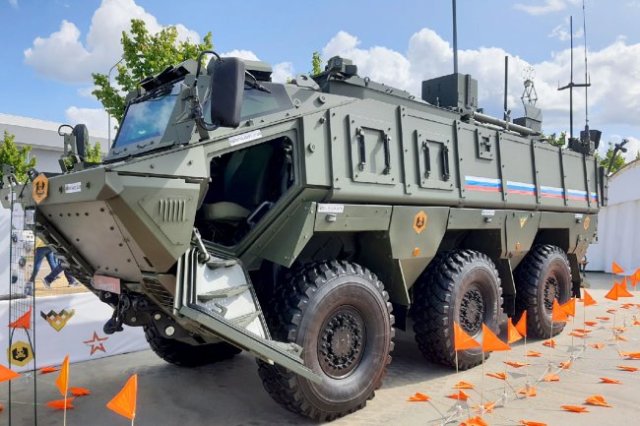The RHM-9 radiation, chemical and biological reconnaissance vehicle is being openly demonstrated for the first time at the seventh International Military-Technical Forum "Army-2021".
Earlier it was reported that in 2018, this specialized armored car was presented in a closed static exhibition of a large-scale weapons exhibition held in the Moscow region.
In 2019, residents and guests of the hero city of Tula could see the "nine" at the parade dedicated to the Victory in the Great Patriotic War.
According to experts, this sample is currently the most advanced in its class, it can automatically recognize more than three thousand types of various chemicals and transmit data to control points via the channels of the automated command and control system or by radio.
The unmanned aerial reconnaissance complex on board conducts the study of the terrain at a distance of up to 25,000 meters.
The RHM was created on the chassis of a three-axle four-wheel drive KAMAZ-63969 "Typhoon-K", which has a high level of bulletproof (including 14.5-mm ammunition), anti-fragmentation and mine protection.
The length is 7.8 meters, the width is 2.5 meters, the height on the roof of the building is 2.7 meters.
The speed of conducting RCM reconnaissance over rough terrain is from 5 to 20 km/h, on roads - from 20 to 50 km / h. The maximum speed on the highway can reach 105 km / h. The engine is KAMAZ-740.354-450. The power, as the name implies, is 450 hp. The power reserve for fuel is 1200 km. Total weight - 20000 kg. Operating temperature range: from -50 to +50 degrees.
Currently, the Russian Army has already adopted the RHM-6 based on the BTR-80 armored personnel carrier. The Tiger-M multi-purpose armored car became the basis for the light RHM-8. The units of radiation, chemical and biological reconnaissance of the airborne troops took on the supply of the modernized RHM-5M.
Alexey Moiseev

